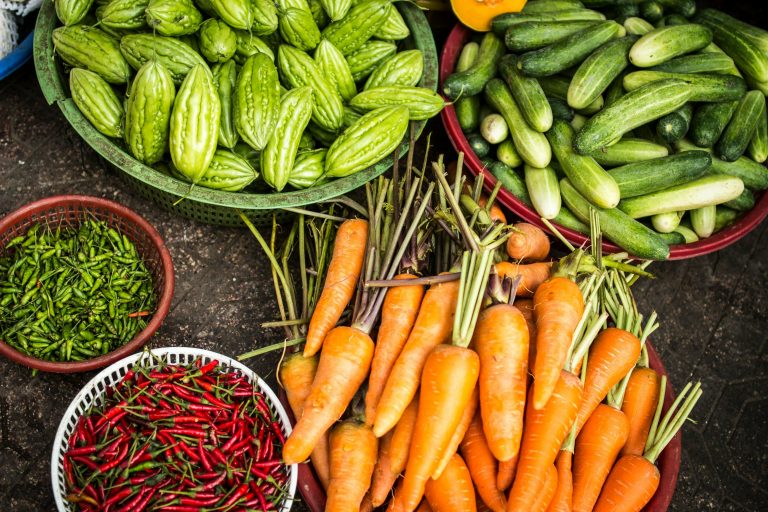How to Be Mindful of Where Your Food Comes From

Being mindful of where your food comes from is essential for making healthier choices, supporting sustainable practices, and fostering a deeper connection with what you eat. Follow these steps to become more conscious of your food’s origins and make informed decisions that benefit your health and the environment.
Step 1: Educate Yourself on Food Sources
Research Your Food's Journey
- Learn about the journey your food takes from farm to table. This includes understanding how it is grown, harvested, processed, and transported.
- Use resources such as books, documentaries, and reputable websites to gather information on food sourcing.
Understand Food Labels
- Get familiar with reading food labels and what they mean. Look for certifications such as organic, fair trade, and non-GMO, which indicate sustainable and ethical practices.
- Pay attention to the country of origin and production methods listed on packaging.
Step 2: Choose Local and Seasonal Produce
Support Local Farmers
- Visit local farmers’ markets and purchase produce directly from growers. This supports the local economy and reduces the carbon footprint associated with long-distance transportation.
- Join a Community Supported Agriculture (CSA) program to receive regular deliveries of locally-grown produce.
Eat Seasonally
- Learn which fruits and vegetables are in season in your area and prioritize buying them. Seasonal produce is often fresher, tastier, and more nutritious.
- Use seasonal produce guides available online or in local publications to plan your meals.
Step 3: Prioritize Organic and Sustainable Products
Opt for Organic Foods
- Choose organic foods whenever possible to avoid pesticides and support farming practices that are better for the environment.
- Look for USDA Organic or other certified organic labels to ensure the food meets organic standards.
Seek Out Sustainable Seafood
- Use sustainable seafood guides to make informed choices about which fish and seafood to buy. Avoid species that are overfished or harvested using harmful methods.
- Look for certifications such as the Marine Stewardship Council (MSC) label on seafood products.
Step 4: Reduce Processed and Packaged Foods
Cook from Scratch
- Minimize your consumption of processed and packaged foods by cooking meals from scratch. This allows you to control the ingredients and avoid unnecessary additives.
- Experiment with simple recipes that use whole, unprocessed ingredients.
Step 5: Connect with Your Food Sources
Visit Farms and Producers
- Take trips to local farms, dairies, and food producers to see firsthand how your food is grown and produced. This builds a personal connection and appreciation for the effort involved.
- Participate in farm tours, pick-your-own produce events, and food festivals to engage with the local food community.
Grow Your Own Food
- Start a garden to grow your own fruits, vegetables, and herbs. Even a small space can yield significant results and provide a deeper understanding of the food growth process.
- Join a community garden to learn from experienced gardeners and share in the harvest.
Step 6: Advocate and Share Knowledge
Spread Awareness
- Share what you learn about mindful eating with friends, family, and your community. Use social media, blogs, and local events to raise awareness about connecting to local food sources.
- Encourage others to ask questions about their food sources and make more informed choices.
Support Policy Changes
- Advocate for policies that promote sustainable agriculture, fair trade, and transparency in food labeling. Engage with local and national organizations working towards these goals.
- Participate in campaigns and petitions that support a more mindful food system.
Being mindful of where your food comes from is a rewarding journey that benefits your health, the environment, and local communities. By following these steps, you can make informed choices, reduce your ecological footprint, and foster a deeper connection with the food you eat.
Resources to Get Started
Here are some resources to help you get started being more mindful of where your food comes from. Some are affiliate links, which means I get a small percentage of your purchase but it does not cost anything extra for you.
- Seed to Table: A Seasonal Guide to Organically Growing, Cooking, and Preserving Food at Home by Luay Ghafari
- Rooted Kitchen: Seasonal Recipes, Stories, and Ways to Connect with the Natural World by Ashley Rodriguez
- Food, Farms, and Community: Exploring Food Systems by Lisa Chase and Vern Grubinger
- Feeding Each Other: Shaping Change in Food Systems through Relationship (Resetting Our Future) by Michelle Auerbach and Nicole Civita
- The Art of Simple Food: Notes, Lessons, and Recipes from a Delicious Revolution: A Cookbook by Alice Waters





